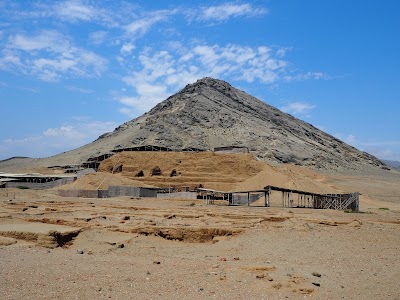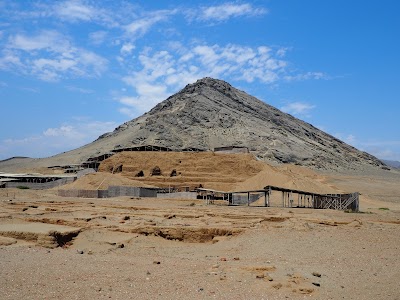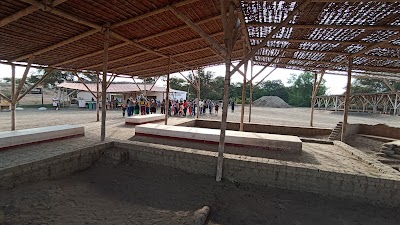Huaca de la Luna (Huaca de la Luna)
Overview
Imagine stepping into the heart of a civilization that flourished over a thousand years ago, where majestic temples and intricately detailed murals whisper tales of gods, rituals, and a complex society. Welcome to **Huaca de la Luna**, a masterpiece of Moche culture nestled in the fertile lands of the Moche Valley, just a short drive from Trujillo in northern Peru.
**Huaca de la Luna**, or "Temple of the Moon," served as a significant religious and ceremonial center for the Moche people, one of Peru’s earliest complex societies, thriving between AD 100 and 800. This expansive archaeological site is part of the larger Huacas de Moche complex, which also includes the **Huaca del Sol**, or "Temple of the Sun." Standing proudly against the backdrop of **Cerro Blanco** mountain, Huaca de la Luna offers a fascinating insight into the intricate artistry and spiritual life of the ancient Moche.
What sets Huaca de la Luna apart from many ancient ruins is its remarkable preservation. The temple was constructed in phases over several centuries, with each new generation building atop the previous one, resulting in a multi-layered structure that archaeologists have painstakingly unpeeled. The temple's grand, rectangular platforms were meticulously fashioned using millions of adobe bricks, each imprinted with unique symbols or marks made by the craftsmen who shaped them.
One of the most captivating aspects of Huaca de la Luna is its **vibrant murals**. These frescoes provide a dazzling glimpse into Moche iconography and mythology, adorning the walls with depictions of gods, warriors, and mythical creatures in vivid colors and intricate detail. The figure of **Ai Apaec**, known as the "Decapitator," frequently appears, emphasizing his significance in Moche religion. His fearsome fanged face, often depicted holding a ceremonial knife, serves as a stark reminder of the ceremonial human sacrifices that occurred at the temple.
The sacrificial rituals represent a more somber aspect of Huaca de la Luna's history. Archaeological findings, including numerous skeletal remains displaying signs of violent death, indicate regular offerings to the gods. These sacrifices, often involving captured warriors from rival groups, were performed in hopes of securing agricultural fertility and military success, underscoring the Moche’s deeply spiritual relationship with their deities.
Yet, Huaca de la Luna is not merely a testament to the macabre; it is also a tribute to the **artistic and architectural ingenuity** of the Moche. The temple complex comprises various rooms, plazas, and platforms, each serving distinct ceremonial purposes. The precision with which these structures align with astronomical events demonstrates the Moche's sophisticated understanding of astronomy. Ongoing excavations have also revealed stunning artifacts, including finely crafted ceramics and metalwork, showcasing the Moche's exceptional craftsmanship.
For visitors, Huaca de la Luna offers a rich tapestry of experiences. As you wander through the ruins, you can almost hear the echoes of ancient ceremonies and bustling activity. The on-site museum enhances this experience by displaying artifacts uncovered during excavations, providing deeper context to the Moche way of life. Knowledgeable guides bring the history to life, vividly recounting the architectural marvels and cultural practices.
Beyond its historical and cultural allure, the site is surrounded by **breathtaking natural beauty**. The rugged landscape of the Moche Valley, with its contrasting hues and expansive skies, creates a postcard-perfect view, making the journey to Huaca de la Luna as visually rewarding as it is intellectually stimulating.
In summary, Huaca de la Luna is not just an archaeological site; it is a portal to an ancient world brimming with history, art, and spirituality. For any traveler venturing through Peru's northern regions, a visit promises an unforgettable journey into the heart of the Moche civilization. The awe-inspiring murals, gripping tales of sacrifice and worship, and the sheer grandeur of the temple itself combine to offer a mesmerizing glimpse into a society long gone but far from forgotten. Bring your curiosity and reverence as you explore this extraordinary testament to human ingenuity and devotion.







